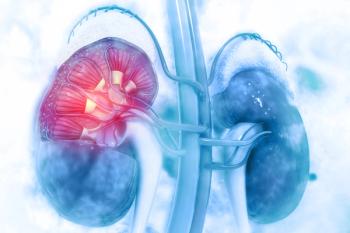
Microplastics Linked to Higher Rates of Hypertension, Diabetes, Stroke
Key Takeaways
- Microplastic pollution correlates with higher rates of NCDs, including high blood pressure, diabetes, and stroke, in US coastal regions.
- The study used data from 555 census tracts, integrating microplastic concentration with disease prevalence and socioeconomic factors.
New research suggests areas with higher concentrations of microplastics also have higher rates of chronic disease.
Communities exposed to higher concentrations of microplastic pollution also experience higher rates of chronic noncommunicable diseases (NCDs), including hypertension, diabetes, and stroke, according to
The latest findings add to research on how environmental pollution may be contributing to the country’s growing burden of cardiovascular disease (CVD). Over the past year alone, experts have talked to The American Journal of Managed Care® (AJMC®) about a number of environmental risk factors impacting Americans, from
Prior research has also found a
Microplastics are plastic fragments measuring between 1 nanometer and 5 millimeters; they are released when larger plastics degrade.1 Exposure occurs when people ingest or inhale these particles, which are now widespread in drinking water, food, and the air.
In the newest study, researchers from Case Western Reserve School of Medicine examined 555 US census tracts located within 200 meters of large bodies of water, where microplastics concentration data are more reliably available. They merged this environmental data with disease prevalence statistics from the CDC PLACES database and 154 additional socioeconomic and environmental factors, including income, employment, social vulnerability, and air pollution.
The researchers found that areas with more microplastic pollution showed a strong association with NCDs across US coastal regions, with positive correlations between microplastic concentration and rates of high blood pressure (correlation coefficient r = 0.24), diabetes (r = 0.3), and stroke (r = 0.26).6 Interestingly, cancer rates had a negative correlation (ˆ = –0.16).
These correlations held up under additional analysis of variance, which showed statistically significant differences in NCD prevalence based on levels of microplastic exposure, this time with an association between microplastic concentration and cancer risk. Researchers also used a machine learning model called XGBoost to predict disease prevalence and assess the relative importance of each variable. Microplastic concentration emerged as a top contributor, particularly in predicting stroke prevalence.
“This study provides initial evidence that microplastics exposure has an impact on cardiovascular health, especially chronic, noncommunicable conditions like high blood pressure, diabetes, and stroke,” said Sai Rahul Ponnana, MA, research data scientist at Case Western Reserve School of Medicine in Ohio and lead author of the study.1 “When we included 154 different socioeconomic and environmental features in our analysis, we didn’t expect microplastics to rank in the top 10 for predicting chronic noncommunicable disease prevalence.”
The researchers stressed that although their findings are concerning, they do not yet prove a causal relationship. However, the patterns observed warrant further investigation, especially into the amount of time or exposure it takes for microplastics to impact a person’s health. In the meantime, based on current evidence, Ponnana said it’s important to limit exposure.
“While it is not feasible to completely avoid ingesting or inhaling microplastics when they are present in the environment, given how ubiquitous and tiny they are," the press release said, "the best way to minimize microplastics exposure is to curtail the amount of plastic produced and used, and to ensure proper disposal,”
References
- New evidence links microplastics with chronic disease. News release. American College of Cardiology. March 25, 2025. Accessed March 25, 2025.
https://www.acc.org/About-ACC/Press-Releases/2025/03/25/10/19/New-Evidence-Links-Microplastics-with-Chronic-Disease - Shaw ML. Environmental risks escalate cardiovascular disease burden, experts warn. AJMC. August 31, 2024. Accessed March 25, 2025.
https://www.ajmc.com/view/environmental-risks-escalate-cardiovascular-disease-burden-experts-warn - Bonavitacola J. Wildfire smoke could affect vulnerable parties, requires preventive measures. AJMC. January 10, 2025. Accessed March 25, 2025.
https://www.ajmc.com/view/wildfire-smoke-could-affect-vulnerable-parties-requires-preventive-measures - McCormick B. Air pollution linked to increased cardiovascular disease risk, study says. AJMC. June 25, 2024. Accessed March 25, 2025.
https://www.ajmc.com/view/air-pollution-linked-to-increased-cardiovascular-disease-risk-study-says - Shaw ML. Ambient toxins linked to disabilities in minority schoolchildren. AJMC. December 10, 2024. Accessed March 25, 2025.
https://www.ajmc.com/view/ambient-toxins-linked-to-disabilities-in-minority-schoolchildren - Ponnana SR. Rajagopalan T, Zhang T, et al. Microplastic concentration, social, and environmental features and their association with chronic disease prevalence: an analysis across U.S. census tracts. Presented at: ACC.25, Chicago, IL; March 29-31, 2025.
Newsletter
Stay ahead of policy, cost, and value—subscribe to AJMC for expert insights at the intersection of clinical care and health economics.















































